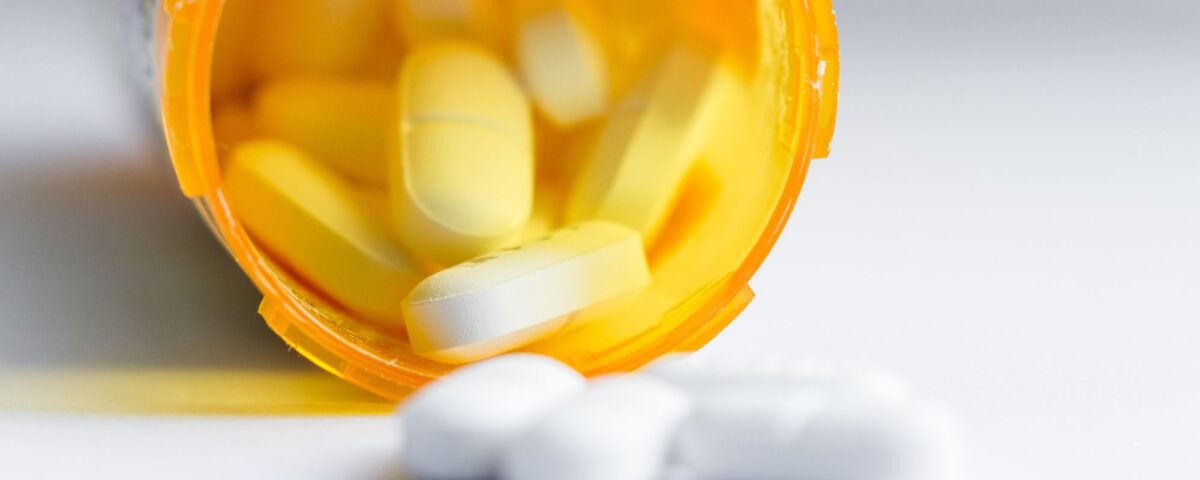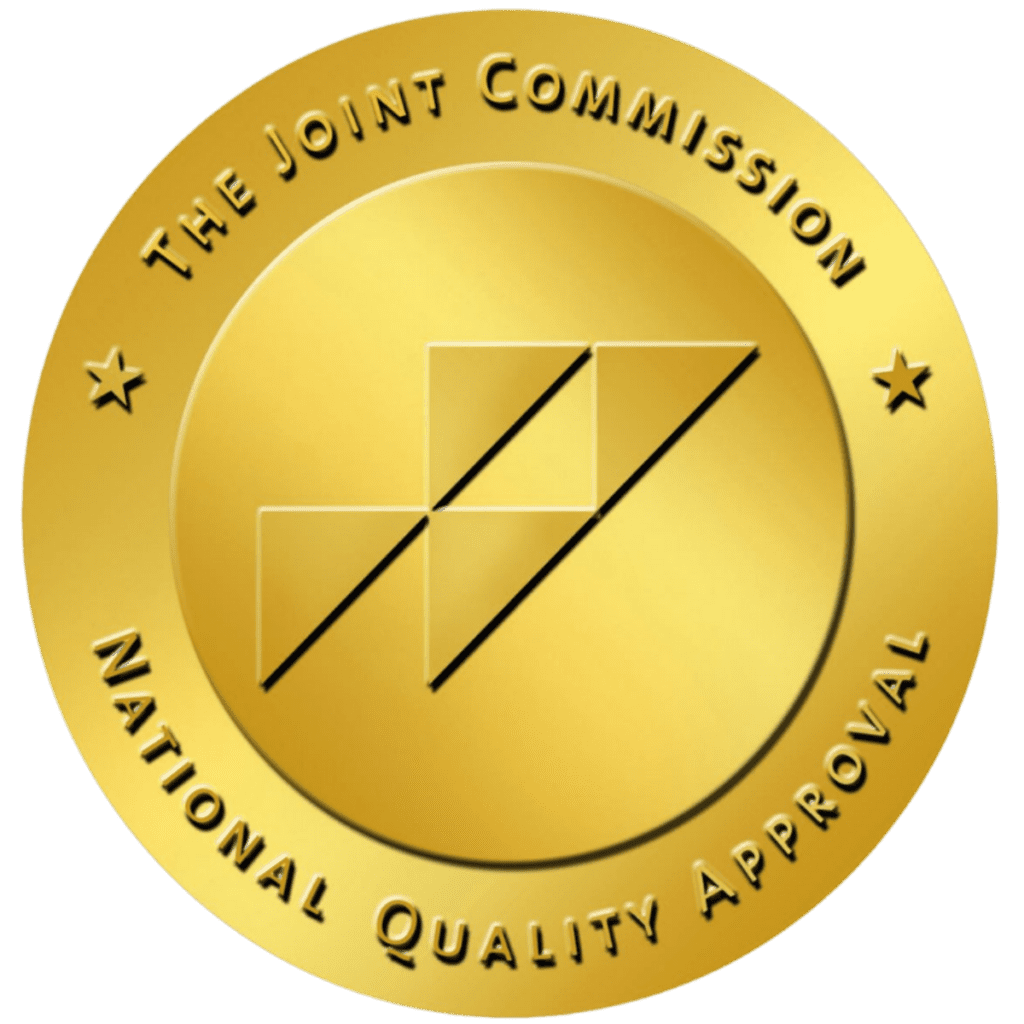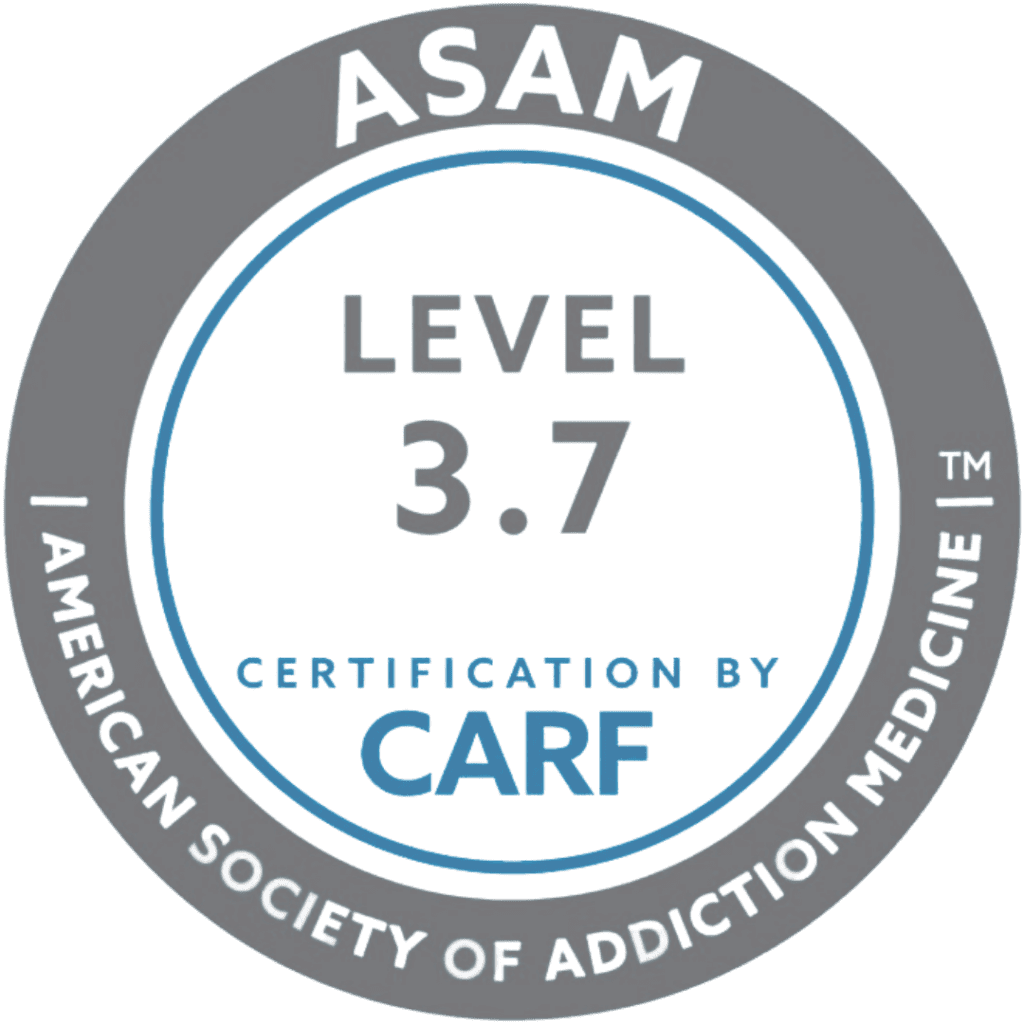The Dangers of Detoxing from Fentanyl Alone: Why Medical Support Matters
Aliya
on
April 21, 2025
Fentanyl continues to shape the narrative of the opioid crisis, developing an unintended reputation for a torrent of overdose deaths, many of them high-profile, and drug dependencies.
Some people are introduced to fentanyl for purely prescriptive reasons to manage chronic pain, while others seek it out recreationally beyond its original medicinal purposes. But even when the respective paths to fentanyl are divergent, there’s one constant: when your use stops, withdrawal begins.
And while it might make sense to try and quit cold turkey through sheer willpower alone, the physical and psychological symptoms may become too hard to bear, so much so that continuing down the path of fentanyl addiction makes more sense than dealing with the discomfort.
“Suddenly stopping or significantly reducing regular drug use may … cause withdrawal symptoms that can range from powerful negative emotions to flu-like symptoms to life-threatening emergencies,” says the National Institute on Drug Abuse (NIDA). “Many withdrawal symptoms are treatable, though for many, using drugs may feel like the only way to alleviate them.”
If this has become your experience, if your fentanyl use has become problematic, NIDA’s assertion is correct — fentanyl substance abuse is treatable, and detoxing from fentanyl with the right professional help can make recovery a reality.
What Is Fentanyl?
The U.S. Centers for Disease Control notes two different types of fentanyl: pharmaceutical and illegally made fentanyl. The former is one of several opioids meant for medical use as a painkiller, mainly for people suffering from intense, chronic pain or following major surgery. Also used to induce drowsiness prior to surgical procedures, fentanyl was introduced as an anesthetic in 1960.
Prescription fentanyl, a synthetic and lab-created opioid, is clinically efficient but prone to misguided recreational abuse among people seeking out its euphoric qualities, meant only for medical settings.
The latter, illicitly manufactured fentanyl — produced in powder, pill, or nasal spray form — aims to capitalize on this. It’s typically smoked, snorted, injected intravenously, or ingested orally.
Fentanyl pills — dubbed “fentapills” — may resemble opioids like oxycodone or anti-anxiety medications like alprazolam, notes the CDC. It’s often mixed with other dangerous narcotics like heroin, cocaine, or methamphetamines, where fentanyl can’t be seen or tasted, so users may not know what they’re taking.
“It is possible for someone to take a pill without knowing it contains fentanyl,” says the U.S. Drug Enforcement Agency (DEA). “It is also possible to take a pill knowing it contains fentanyl, but with no way of knowing if it contains a lethal dose.”
“Dealers package it to look like a normal prescription pill that you would get at the pharmacy, but nobody can tell what’s in it,” notes Yale University Dr. David Fiellin in an article. “So, someone buys from a drug dealer what they think is Valium, or cocaine, or OxyContin, but it has a small amount of fentanyl in it that the buyer is unaware of. This can cause an overdose because the individual doesn’t have the physical tolerance to fentanyl, even if they have a tolerance to, say, OxyContin.”
Is Fentanyl Addictive?
Next to the risk of overdose is fentanyl’s high likelihood of dependency and addiction. It activates the brain’s reward system by releasing a flood of dopamine, reinforcing the behavior that leads to fentanyl’s euphoric high.
Over time, your brain adjusts to the presence of the drug, and you need more of it — first, to mimic the effects of the original high that have begun to wear off as you become tolerant to the drug, and then, just to feel normal. Fentanyl’s strength means it only takes a minimal amount to become addicted or overdose.
“The pleasure or feeling high that results from taking an opioid can make you want to continue taking them more often and at higher doses,” says the Mayo Clinic. “This can lead to addiction: Your brain and behavior are so badly affected that you can no longer control your use of opioids.”
Opioid Addiction Statistics
Underneath the data points about fentanyl are alarming warnings about its effects:
- Fentanyl remains a factor in 53% of overdose deaths.
- Synthetic opioids — mainly illegally made fentanyl — were involved in nearly 68% of U.S. overdose deaths in 2022.
- 42% of pills tested by the DEA for fentanyl — a Schedule II controlled substance — contained at least 2 mg of fentanyl.
- Fentanyl, notes the National Center for Drug Abuse Statistics (NCDAS), contains a 25% recreational drug toxicity, higher than heroin (20%), alcohol (10%) or cocaine (6.7%).
- Fentanyl overdoses surpass prescription opioid overdoses by nearly 551%.
- One-fifth of states have reported up to a 98% increase in opioid overdose fatalities.
The Dangers of Opioids
Opioids, fentanyl included, have become a frustrating paradox. The very same benefits they deliver in treating pain also make them risky, dangerous, and prone to abuse.
Opioid abuse isn’t new within our societal fabric. Many opioids are naturally derived from the poppy plant, just like opium, which found its way into the hands of 19th-century recreational smokers seeking the same sedative, relaxing, euphoric qualities as modern-day fentanyl.
Within the last half-century, opium’s popularity shifted to morphine and heroin during the 1960s and 1970s, and within the last decade, to fentanyl, up to 50 to 300 times more potent than morphine. It’s fentanyl’s ultimate availability, popularity, and potency that have made it the de facto opioid of recreational choice, driving addiction and overdose rates. The Yale Medicine study specifically points to the diversion of legal fentanyl into the hands of people who began misusing the drug and its ease of manufacturing, where most illicit fentanyl is cheaply produced in underground Mexican labs.
One of the most dangerous — and arguably most significant — aspects of opioid use is just how quickly tolerance builds. You may find yourself needing to take more just to achieve the same effect. As your tolerance increases, so does your risk of overdose. And with fentanyl, that risk is especially high because the margin between an approved medical dose and a lethal one is so small — according to the NCDAS, where 2 mg is a lethal dose, doses as small as 0.25 mg raise the risk of overdose.
Get confidential help from our addiction and mental health treatment facilities located across the United States. Call to join one of our quality programs today!
Speak With Our Admissions TeamDetoxing from Fentanyl: Here’s What Happens
Entering rehab for fentanyl addiction is a brave step, an acknowledgment that it’s time to seek help and that you’re willing to put in the work to make it happen. And the first step is a detox from fentanyl. Contrary to myths and misconceptions that persist, detoxing from fentanyl doesn’t mean going it alone or sweating out fentanyl withdrawal symptoms, but instead having the support of professionals with a compassionate commitment to making your treatment as comfortable as it is effective.
Medical Detox
How to detox from fentanyl is just as important as when to detox. Instead of a hard stop, detox from fentanyl is the process of gradually weaning and easing yourself away from the drug to help you minimize any health risks. Why is it called medical detox? Detoxing takes place at a rehab facility where you’ll be aided by medical staff — doctors, nurses, addiction support staff — in a clinically supervised setting. Once your body is no longer receiving fentanyl after becoming dependent, your body has to readjust. They’ll monitor your vital functions (like your heart and breathing) to remain stable as your body starts to become acclimated to being without a foreign substance again.
Fentanyl Withdrawal Symptom Management
How long does fentanyl stay in your system, and how long does it take to detox from fentanyl? They’re the two most common questions you might ask as you enter this first phase of rehab. Here’s a general timeline you might experience:
- 8–24 hours after last use: This is typically when the first fentanyl withdrawal symptoms begin. You might feel emotionally on edge — anxious, agitated, or restless. Physically, early signs may include muscle aches, sweating, yawning, a runny nose, and other flu-like symptoms. These are often manageable, but can grow quickly in intensity.
- 24–72 hours after last use: Fentanyl withdrawal usually reaches its peak during this time. Symptoms you may have noticed earlier can become more severe, and additional effects like nausea, vomiting, diarrhea, rapid heart rate, and spikes in blood pressure may set in. These few days are often the hardest part of opioid withdrawal, but know that sticking it out is worth it in the end.
- 3–10 days after last use: After the peak phase passes, your fentanyl withdrawal symptoms may begin to ease in intensity, though they can still linger. You may continue to feel physically uncomfortable and emotionally drained, but this stage is often more tolerable under medical supervision.
- 10–14+ days and beyond: While the acute symptoms fade, some milder effects can hang on for several weeks. This is sometimes referred to as post-acute withdrawal syndrome (PAWS). You may still experience trouble sleeping, mood swings, fatigue, or difficulty focusing, but by this point, the drug has been effectively cleared from your system.
Remember that the time it takes to detox from fentanyl can vary from person to person. The amount and duration you took the drug, if you combined it with other addictive substances, plus your physiology, all play a part in the length of your detox timeline and symptom management.
Medication-Assisted Treatment
While detoxing from fentanyl, certain medications can help ease certain stubborn withdrawal symptoms and cravings, especially if you’re weaning off the drug after chronic, long-term use. This is called Medication-Assisted Treatment, or MAT. Here are some of the medicines that rehab staff may carefully prescribe for you during your stay:
- Methadone: A long-acting drug that eases withdrawal symptoms and reduces fentanyl cravings. It’s often prescribed for people detoxing from heroin. Methadone can be used short-term during detox or as a long-term maintenance medication.
- Buprenorphine: Helps relieve withdrawal symptoms and shortens the detox period. In many cases, buprenorphine is combined with naloxone to help prevent opioid misuse.
- Clonidine: Commonly used as a medication for high blood pressure, clonidine is prescribed during detox from fentanyl to help reduce withdrawal symptoms such as anxiety, muscle aches, sweating, runny nose, and abdominal cramping. (However, it does not reduce cravings.)
Naltrexone: An FDA-approved opioid antagonist that blocks the effects of opioids and can help prevent relapse. Naltrexone should not be administered until opioids are fully cleared from the body, since it can trigger sudden and severe withdrawal symptoms if used too early.
Looking for quality treatment for substance abuse and mental health that’s also affordable? Aliya Health Group's treatment facilities accept most major insurance providers. Get a free insurance benefits check now!
Check Your CoverageWhat Happens After Fentanyl Detox?
Once detox from fentanyl is complete, your body is cleared of the drug, and you can start your recovery with a clean slate. For most substance use disorders, there are generally two rehab options:
- Inpatient fentanyl treatment
- Outpatient fentanyl treatment
These levels of care offer ongoing care following fentanyl detox to help individuals maintain their sobriety and grow in recovery.
Inpatient Fentanyl Treatment
An inpatient setting offers the opportunity to receive round-the-clock care by allowing you to live onsite at a treatment facility — an intensive treatment model enabling you to focus solely on your recovery, 24/7, where the environment is more structured with full support. Inpatient is ideal for people with more severe addictions who might not be able to cope with living on their own without the risk of relapsing. During treatment, your day is filled with a blend of individual and group therapy and even holistic approaches depending on your tailored schedule, with continuous medical oversight. The goal is to make the most of treatment during your inpatient stay after detoxing from fentanyl.
Outpatient Fentanyl Treatment
Outpatient treatment offers the same level of integrative care as inpatient but enables you to live at home once therapy finishes for the day. It’s ideal for people whose addictions aren’t severe enough to necessitate an inpatient stay or who have personal or professional circumstances that make an extended inpatient rehab stay challenging. Because your treatment plan is customized, outpatient is structured to accommodate your daily routine while making sure that you remain engaged in treatment. Outpatient does require a higher degree of personal responsibility, but with the right support network and regular check-ins, it’s an effective mode of treatment to set you on the path to recovery.
Aftercare Options Following Fentanyl Addiction Treatment
Formal treatment eventually comes to an end, but it’s really just the beginning of your recovery journey. One thing to remember is that you don’t ever need to go it alone, and this is where aftercare can keep you on track. Aftercare is a phase of treatment with the chance to keep attending ongoing therapy or alumni programs, connect with support groups in your area, or stay in a sober living environment before transitioning into your own home.
Detoxing from Fentanyl with Professional Help
A detox from fentanyl with clinical support gives you peace of mind that you can get through the journey of recovery with all the right steps in place. It means being able to detox without worrying about discomfort, side effects, or the possibility of relapse. And it’s the beginning of a therapeutic journey where stopping use of fentanyl is just the first step, since therapy after detox is designed to address how drug use has impacted your mind, your body, and your spirit.
Make it happen by contacting us today. We’re on hand 24/7 to answer any and all questions you may have about rehab, detoxing from fentanyl, insurance coverage, and treatment programs.
- Medical Examiner’s Finding that Prince Died from Fentanyl Overdose Underscores Rise of Drug Nationally and Importance of Naloxone | Ohio Department of Health
- Why are Drugs so Hard to Quit? | National Institute on Drug Abuse (NIDA)
- Facts about Fentanyl.
- Fentanyl: Uses, Warnings & Side Effects
- Fentanyl | Overdose Prevention | CDC
- Fentanyl
- Why Is Fentanyl Driving Overdose Deaths? – Yale Medicine
- Learn more about Fentanyl | Behavioral Health Services.
- What are opioids and why are they dangerous? – Mayo Clinic
- Fentanyl Abuse Statistics – NCDAS
- Naltrexone – StatPearls – NCBI Bookshelf















